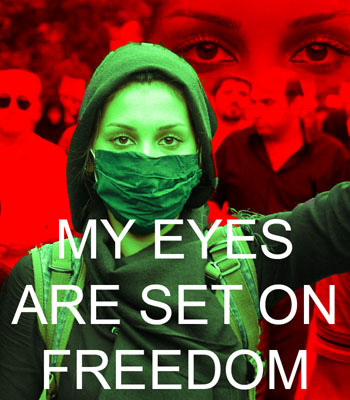http://worldbeyondwar.org/
The idea has been floated and endlessly reintroduced in legislation since the founding of the United States of creating a Department of Peace. These efforts even resulted in 1986 in the creation of the USI”P” — the U.S. Institute of “Peace” which this week held events with Lindsey Graham, Tom Cotton, Madeleine Albright, Chuck Hagel, William Perry, Stephen Hadley, Zbigniew Brzezinski, Susan Rice, John Kerry, and Michael Flynn, and which in 2015 rejected proposals from the peace movement to have anything to do with advocating for peace. So the push to create a Department of Peace rolls on, generally ignoring the existence of the USI”P.”
I try to imagine what a senate confirmation hearing would look like for a nominee for Secretary of Peace. I picture the nominee being rolled in by his attendants and the questioning beginning something like this:
“General Smith, thank you for your service. What year was it, do you recall, that you designed your first missile, and was that prior to or following the Wright Brothers’ flight at Kitty Hawk? Thank you for your service, by the way.”
“Senator, it was that very same day, and to — cough! — excuse me, to give full credit there was a colored boy who helped me do it. Now what was his name?”
But the trick is to imagine a nominee mistakenly or magically chosen who would actually be qualified for the job. Now I imagine him or her walking into the hearing room. Some of the questioning might go like this:
“Ms. Jones, what do you think ought to have been done when the Russians invaded Ukraine and stole Crimea?”
“I think a U.S. Russian meeting with the following as the top 10 items on the U.S. agenda:
- Recognition of Russian suffering during World War II, including understanding of the impact of the years-long U.S. delay while they died by the tens of millions.
- Appreciation for Russia’s agreement on German reunification along with the U.S. commitment at that time not to expand NATO as it has gone ahead and done.
- Apology for facilitating a violent coup in Kiev, and commitment to refraining from all constraint on Ukrainian self-determination.
- A proposal to withdraw U.S. troops and weapons from all of Europe, to disband NATO, to end foreign arms sales and gifts, and to abolish U.S. nuclear weapons.
- A request that Russia reciprocate.
- A plan for a new, internationally monitored, vote in Crimea on whether to rejoin Russia.
- A . . . “
“Ms. Jones, you might wish to surrender to the forces of evil, but I have no intention of supporting such measures. Ms. Jones, have you or anyone in your family ever served your country in the United States military?”
The real trick, however, would be to imagine a qualified nominee and a qualified senate. Then we might get:
“Mr. Garcia, what steps would you advocate to reduce the use of war?”
“Senator, we might begin by ceasing to arm the poor countries where all the wars take place but where none of the weapons are manufactured. The U.S. is the top arms dealer in the world and along with five other countries accounts for the vast majority of it. When weapons sales rise, violence follows. Similarly, the record is clear that when the United States spends its own money on militarism, more wars — not fewer — result. We need a program of transition from violent industries to peaceful industries, which is good for the economy and the environment as well. And we need a program of transition from hostile foreign policy to one of cooperation and aid. We could become the most loved country in the world by providing the planet with schools and tools and clean energy for a fraction of what we spend now on a vicious cycle of armament and war that makes us less safe, not more secure.”
“Mr. Garcia, I’d like to see you confirmed. I hope you’re celibate and willing at least to pretend to be religious, because even in this fantasy you are still dealing with the United States Senate after all.”
A fantasy it may be, but I am inclined to consider it a valuable one. That is to say, we ought to be encouraging everyone we can to imagine what it would be like to have a Department of Peace, even though the current U.S. government would turn such a Department into a blood-soaked Orwellian travesty. In years gone by I agreed to be named “Secretary of Peace” in the Green Shadow Cabinet. But we never did much with it. I think a whole shadow Department of Peace should be modeling sane alternatives to actual government policy, expanding the range of actual corporate media debate. This is in some ways what we try to do at World Beyond War.
I recommend a small book, edited by William Benzon, called We Need a Department of Peace: Everybody’s Business, Nobody’s Job. That slogan refers to the idea that we all have a powerful interest in peace, but we don’t have anybody working on it — at least not in the way in which we have millions of people employed with public dollars in the pursuit of more wars. The book collects statements advocating for a Department of Peace over many years, beginning with Benjamin Rush’s 1793 “Plan of a Peace-Office for the United States,” which was published by Benjamin Banneker.
Some of these pieces of writing date from periods in which people could claim that Christianity is the only peaceful religion or that there is no organized opposition to a Department of Peace or that only bringing peoples under a larger empire can establish peace — or could quote Abraham Lincoln arguing for war as an inspirational message for peace. Most of this stuff can be mentally updated as you read, because the basic wisdom of establishing an office to pursue peace is only strengthened when one reads it in voices from other cultural perspectives.
There is, however, a sticking point for me that doesn’t seem to slide off so easily. The authors of this book maintain that the State Department and the War (or “Defense”) Department both serve good useful purposes that should coexist alongside a Department of Peace. They propose dividing duties. For example, the State Department could form bilateral agreements, and the Peace Department multilateral agreements. But if the Department of Peace asks a nation to sign a disarmament treaty, and the Department of State asks that nation to buy U.S.-made weapons, isn’t there a conflict? And all the more so, if the Department of War bombs a country while the Department of State is sending it doctors, isn’t there a contradiction to be found in the coffins shipped back containing doctors’ bodies?
Now, I’m not arguing that paradise on earth must be achieved before a Department of Peace can be created. If a President had eight advisors urging her to bomb a village, it would be significant for there to be a ninth urging food and medicine instead. But in such a situation, an advocate for peace would be like an ombudsman or an inspector general informing an institution of its crimes and offenses and available alternatives as it went along. A Department of Peace releasing a plan for sane productive action would resemble the Washington Postreleasing an account of its deceptions and distortions. Both would be odd footnotes. But both might do some good and might hurry the arrival of that day when honest journalism and foreign policy without murder become mainstream in halls of power.
One way for a Department of Peace to not be at odds with a Department of War is to turn “peace” into something other than an alternative to war. For whatever combination of reasons, that’s a lot of what we find in current advocacy for a Peace Department (not to mention in the rest of the peace movement): peace in your heart, no bullying in schools, restorative justice in court systems, etc. — most of it wonderful stuff tangentially related to ridding the world of war. We also find well-meaning support for generally pro-war measures, such as the presidential creation of an “atrocities prevention board” that will seek to identify non-U.S. atrocities to be dealt with by the U.S. government, including the Department of War.
The Department of Peace proposed in current legislation has been subtly changed into a Department of Peace Building that, according to its advocates would:
- Provide much-needed assistance to efforts by city, county, and state governments in coordinating existing programs; as well as develop new programs based on best practices nationally
- Teach violence prevention and mediation to America’s school children
- Effectively treat and dismantle gang psychology
- Rehabilitate the prison population
- Build peace-making efforts among conflicting cultures both here and abroad
- Support our military with complementary approaches to peacebuilding. [Try to read that aloud with a straight face.]
- Create and administer a U.S. Peace Academy, acting as a sister organization to the U.S. Military Academy.
I think Benjamin Rush’s proposal was far superior to what it has gradually evolved into — and it involved ladies in white robes singing hymns. But it also suggested a real alternative to the military madness that has engulfed the U.S. government. Of course I’d say yes, rather than no, to passage of the above bill. But it presents the duties of the Secretary of Peace as principally advising, not the president but the Secretaries of “Defense” and State. That’s a step in the right direction. But so, I think, is working to inform people of what a real Department of Peace might do.
--
David Swanson is an author, activist, journalist, and radio host. He is director of WorldBeyondWar.org and campaign coordinator for RootsAction.org. Swanson's books include War Is A Lie. He blogs at DavidSwanson.org and WarIsACrime.org. He hosts Talk Nation Radio. He is a 2015 and 2016 Nobel Peace Prize Nominee.
Follow him on Twitter: @davidcnswanson and FaceBook.
Help support DavidSwanson.org, WarIsACrime.org, and TalkNationRadio.org by clicking here: http://davidswanson.org/donate

